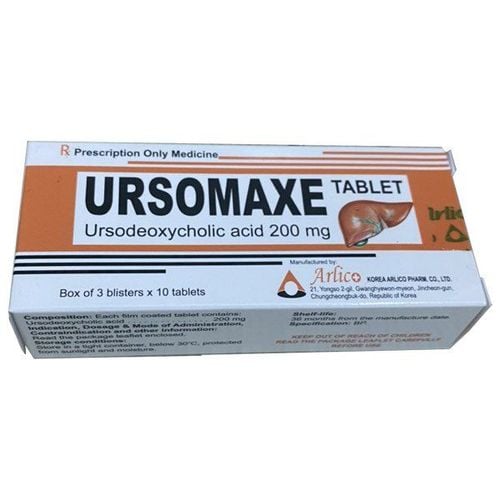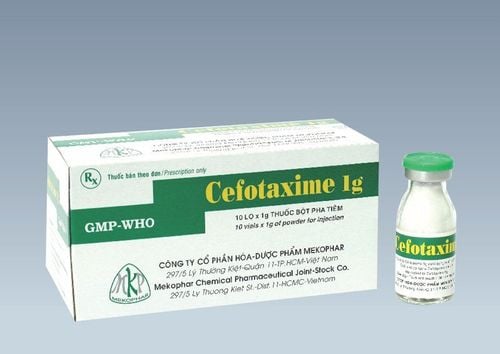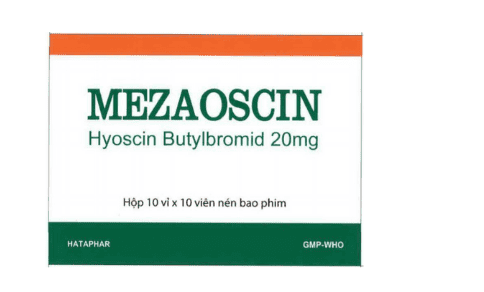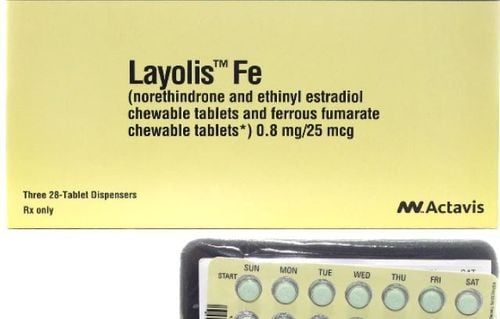This is an automatically translated article.
Sampovit drug with the main ingredient is Cefoxitin 1g, belongs to the 2nd generation Cephalosporin antibiotic group. Sampovit is used in the treatment of bone and joint infections, gynecological infections, lower respiratory tract... Find Understanding the basic information about the composition, usage, dosage and side effects of Sampovit will bring the best treatment effect to the patient.
1. What is Sampovit?
Sampovit drug is prepared in the form of a powder for injection, with the main ingredients including:
Active ingredient: Cefoxitin (in the form of Cefoxitin sodium) content of 1g. Excipients: Just enough 1 vial of 1g. Mechanism of action Cefoxitin sodium belongs to the second generation Cephalosporin antibiotic group, is an antibiotic with bactericidal action through inhibition of bacterial cell wall synthesis by binding to one or more protein binding proteins. penicillin (PBP). Thereby, inhibiting the final transpeptidation step of Peptidoglycan synthesis of bacterial cell wall.
Finally, pathogenic bacteria are lysed due to the continuous action of the cell wall degrading enzymes Autolysin and Murein hydrolase, while cell wall assembly is inhibited. Cefoxitin sodium is active against a wide range of Gram-negative bacteria including anaerobes. In addition, Cefoxitin sodium is highly stable in the presence of beta-lactamases, both Cephalosporinases and Penicillinases of Gram-negative bacteria.
The antibacterial spectrum of Cefoxitin sodium includes:
Aerobic bacteria: Gram-positive cocci including Staphylococci, group A beta-hemolytic staphylococcus, group B beta-hemolytic staphylococcus, Streptococcus pneumoniae... Gram-negative cocci including Neisseria gonorrhoeae, Neisseria meningitidis... Gram-negative bacilli including Escherichia coli, Proteus mirabilis, Klebsiella pneumoniae, Morganella morganii, Serratia marcescens... Anaerobic bacteria: Gram-positive cocci including Peptostreptococcus spp, Peptococcus spp... Gram bacilli positive including Clostridium perfringens, Eubacterium spp, Propionibacterium acnes... Gram-negative cocci, Gram-negative bacilli including Bacteroides fragilis, Bacteroides melaninogenicus, Fusobacterium spp...
2. What are the effects of Sampovit?
Sampovit is indicated for the treatment of the following cases:
Lower respiratory tract infections seen in pneumonia, lung abscess... Urinary tract infections. Intra-abdominal infections such as cholecystitis, abdominal abscess... Gynecological infections, pelvic inflammatory disease, endometritis... Sepsis . Musculoskeletal infections. Skin and soft tissue infections. Gonorrhea . Prophylaxis of surgical-associated infections.
3. Contraindications of Sampovit
Allergy, hypersensitivity to any component of Sampovit, other antibiotics containing Cefoxitin, antibiotics of the Cephalosporin group in general and the 2nd generation Cephalosporin in particular. The drug is also contraindicated in patients with allergies, hypersensitivity to antibiotics such as Penicillin, Monobactam and Carbapenems.
4. Dosage and how to use Sampovit
Sampovit drug is used by intramuscular injection, injection or intravenous infusion:
Intramuscular: Mix 1 vial of Sampovit 1g with 2ml of distilled water or 0.5% or 1% Lidocaine solution and shake well to have a concentration of about 400mg/ ml. Intravenous injection: Mix 1 vial of Sampovit 1g with 10ml or 2 vials (2g) with 10-20ml of distilled water for injection to reach a concentration of 95 or 180mg/ml, intravenously slowly for 3-5 minutes. Intravenous infusion: Mix 1 vial of Sampovit 1g with 10ml or 2 vials (2g) with 10-20ml of distilled water for injection, 0.9% NaCl, 5% Dextrose to reach a concentration of 95-180mg/ml. Then, dilute the above solution with 50-1000ml of solvent such as NaCl 0.9%, Dextrose 5%, Ringer lactate... Dosage in adults, children ≥ 12 years old, people ≥ 40 kg:
Usual dose Usual: 1 to 2 g infusion every 6 to 8 hours. Dose for each infection:
| Nhiễm khuẩn | Liều và đường dùng |
| Viêm phổi, đường tiết niệu, da hoặc mô mềm (không biến chứng | Tiêm tĩnh mạch 1g mỗi 6 – 8 giờ |
| Mức độ trung bình đến nặng | Tiêm tĩnh mạch 1g mỗi 4 giờ, hoặc 2 g mỗi 6 – 8 giờ |
| Cần dùng liều cao | Tiêm tĩnh mạch 2g mỗi 4 giờ, hoặc 3g mỗi 6 giờ |
| Lậu không biến chứng | Tiêm tĩnh mạch 2g liều duy nhất kèm uống 1g Probenecid |
| Vùng chậu | Tiêm tĩnh mạch 2g mỗi 6 giờ + Doxycyclin 100mg x 2 lần/ngày (uống hoặc tiêm tĩnh mạch) |
| Dự phòng trong phẫu thuật | Tiêm tĩnh mạch 2g trong 60 phút trước phẫu thuật. |
Dosage for children < 12 years old:
Children 0 - 1 week old: 20 - 40mg/kg every 12 hours. Children 1 to 4 weeks old: 20-40mg/kg every 8 hours. Children > 4 weeks old: 20-40mg/kg every 6-8 hours. In case of severe infection: Increase daily dose to 200mg/kg, maximum dose is 12g/day. Patients with impaired renal function:
Use dose based on Creatinine clearance (CrCl)
CrCl dose 30 - 50ml/min: 1-2g every 8-12 hours. Dose of CrCl 10 - 29ml/min: 1-2g every 12-24 hours. CrCl dose 5 - 9ml/min: 0.5 - 1g every 12-24 hours. CrCl dose < 5ml/min: 0.5 – 1g every 24 – 48 hours.
5. Notes when using Sampovit
Treatment with Sampovit drug with high dose or prolonged, may cause side effects such as:
Local reactions: Thrombophlebitis when administered intravenously. Allergic reactions: Rash including exfoliative dermatitis or toxic epidermal necrolysis, urticaria, flushing, fever, dyspnea, angioedema, severe anaphylaxis. Cardiovascular: Low blood pressure. Nervous system: Headache, dizziness, dizziness, insomnia, drowsiness. Digestive disorders: Anorexia, abdominal pain, nausea, vomiting, diarrhea, pseudomembranous colitis. Neuromuscular: Chronic myasthenia gravis. Hematology: eosinophilia, leukopenia including granulocytopenia, neutropenia, hemolytic anemia, thrombocytopenia, bone marrow failure. Hepatobiliary: Transient increase in serum AST, ALT, LDH, serum alkaline phosphatase, jaundice. Urinary nephropathy: Acute renal failure. Treatment with Sampovit is usually carried out in a medical facility with adequate facilities. Therefore, in the process of treating patients, family members and especially medical staff, it is necessary to pay attention and closely monitor the use of Sampovit to promptly detect and handle side effects or any other adverse effects. usually different.
Caution when using Sampovit in the following subjects:
Caution when using Sampovit in children under 3 months of age, the elderly, patients with a history of or are suffering from diseases on the gastrointestinal tract such as colitis colon, patients with severe renal impairment, malnourished patients or in a debilitated state. Pregnant women: According to the classification of the US Food and Drug Administration (FDA), the active ingredient Cefoxitin in Sampovit belongs to group B, a group with little evidence of risk to the fetus when used in pregnant women. Therefore, the use of Sampovit during pregnancy should be considered unless absolutely necessary. Lactation: There are currently a few studies indicating that the active ingredient cefoxitin sodium contained in Sampovit can be excreted in breast milk, but at low concentrations and there is not much evidence of harmful effects of the drug. Cefoxitin sodium for infants. Therefore, caution should be exercised when using Sampovit in this subject. Drivers or machine operators may experience signs such as headache, dizziness, dizziness, insomnia, drowsiness... after using Sampovit.
6. Sampovit drug interactions
Interaction with other drugs:
Probenecid reduces the renal excretion of Sampovit. Concomitant use of Sampovit with the following drugs increases the risk or severity of renal failure and hypocalcemia: Pamidronate ; Zoledronic acid ; Alendronic acid ; Ibandronate; Clodronic acid. Drugs that increase nephrotoxicity when used with Sampovit: Aminoglycosides; Furosemide ; Foscarnet; Mannitol ; Tenofovir disoproxil ; Tenofovir alafenamide . Above is an overview of ingredients, indications, contraindications, dosage and notes when using Sampovit. Sampovit is a prescription drug used under the direction and supervision of doctors and medical staff, so patients absolutely do not use it on their own to avoid accidents.













